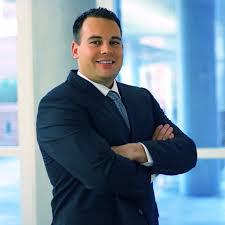Learn about purchasing for teams

Jason Schreuder has successfully accomplished both Certified Enterprise Coach (CECSM) and Certified Team Coach (CTCSM) applications. He now relishes the opportunity to share insights about his journey.
In this article, Jason covers questions such as:
- Should I Start with CTC or CEC?
- Begin with the End in Mind
- Agile Coaching Competencies
- Additional Resources
- The Pre-Application Readiness Call
If you’re an existing or potential CAC candidate and are looking for some helpful tips, read on...
=============
I have been contacted quite a bit recently for advice on applying to be a Certified Agile Coach (CTC or CEC with the Scrum Alliance). And I am so glad for it! We need more qualified, experienced, peer-assessed agile coaches representing the profession of agile coaching to help achieve the Scrum Alliance’s mission of transforming the world of work.
I wanted to capture some thoughts on where to begin, and also share some resources that you may find useful. For some background, you may want to check out my post from earlier this year explaining What is a Certified Agile Coach?
Scrum Alliance has done an incredible job of refreshing the Become a Certified Agile Coach Page to make it easier to learn about the process. I am going to reshare bits and pieces from that site, but I would suggest you start there to guide your approach and use this more for advice in getting started.
Should I Start with CTC or CEC?
The CTC and CEC credentials are different. Each program has a four-part process, which will take several months or several years to complete, depending on your readiness.
Take a quick look at both the CTC Requirements checklist and the CEC Requirements checklist to get an idea of what to consider for each path.
When advising people on which path (CTC or CEC, or both), I like to start with the Summary of Expectations (combined). It gives a broader view of expectations for each.
And here they are separated out: CEC Summary of Expectations & CTC Summary of Expectations. Note the wide range of skills and experience needed in at least six key areas.
For most, it makes sense to focus on the CTC application first, where many agile coaches have a broad background with team coaching, and then keep an eye out for what is needed for CEC later on. You will also become a better coach by going through each application process, in turn, because of the growth you will need to be successful. And that is what it is all about–growth, not a certification, right?
Finally, check out the application instructions document for even more helpful tips and a more detailed explanation of the process.
Recommendation: Begin with the End in Mind
Another little bit of advice I would share is: Give some serious thought to who you are going to ask to write your recommendations. You will need two client and one mentor recommendation. Consider clients you’ve worked with who can speak to your coaching approach, how you have helped them be successful as an agilist and leader, and the value you provide in a coaching role. Same thing for your mentor: What is that relationship like, how as it helped you, and what would that person share about your development? Then, put some energy into those relationships as you prepare your application, and leverage those experiences to shape the application itself. In other words, begin with the end in mind. By the time I ask for a recommendation for the Scrum Alliance Certified Agile Coach application, what would I want this person to say about me as a coach?
Agile Coaching Competencies
Another nuance of these two certifications that helps provide some of the rigor we need in the profession of agile coaching is related to the International Coaches Federation (ICF) competencies. You can see from the expectations summary that you are expected to demonstrate professional coaching skills at the ICF-ACC level (see more information below about the pre-application call). Check out these ICF core competencies as a guide for your coaching practice, and, as a matter of interest, the ICF Team Coaching Competencies (developed in late 2020). Finally, the Path to Coaching program is a fantastic resource to help guide your approach to coaching as you prepare for application. The biggest gap that the review team encounters in applicants is with demonstrable professional coaching skills. Be sure you give these competencies adequate focus as you develop toward a well-rounded Certified Agile Coach® candidate.
Additional Resources
You are also required to join the Candidate CTC Google Group. At a minimum, I would review some posts, and take a minute to introduce yourself to the group. It is full of candidates like you, and also tons of guides eager to help with advice, answering questions, or sharing their experiences. You will also likely find many more ideas and resources there than listed anywhere on the Scrum Alliance site. Here are three great examples of some nuggets you can find there:
- Gene Gendel has a video on YouTube explaining his mentoring program and a bit about the application process.
- Amir Peled wrote a LinkedIn post that turned into a conference talk that he presented the Scrum Alliance Agile Coaching Retreat Live Online. Here is the writeup about it, with the recording of the session.
- Vernon Stinebaker also had a nice presentation on Pathways to Certified Agile Coach at the Agile Coach Retreat Live Online.
You could also check out this list of candidate resources from the Scrum Alliance.
The Pre-Application Readiness Call
After reviewing all of this, and if you think you’re ready, your first step is to schedule a pre-application call with someone on the Pre-Application Call contact list. These folks all know the process really well, and most have been volunteers on the team for a long time. You really cannot go wrong with any of them, but feel free to read about their backgrounds before reaching out. They will give you feedback on your readiness, and help identify any gaps or weaker areas you may have on the Summary of Expectations.
After that, you may be able to move forward. You will need to pay the application fee to get a personal Google document to use for part I of your application. Here is a tip: before doing this, pull the Sample CTC Application Part I and even Part II from the CTC page and start to sketch out your responses. That way, you will know for sure that you have everything you need for Part I before paying the fee.
Part II of the application is much more nuanced and personal, and your experience may vary. Again, check out the application instructions for possible scenarios. Many folks (including yours truly) don’t pass the first time they submit Part II, and need to gain more experience and take time to reflect more before resubmitting. So, focus on Part I, and then once you pass that, start to build out your ideas and responses for Part II over time. (I spent about 6 months on it myself, getting lots of feedback from mentors and peers along the way.)
Wrapping Up
I hope these thoughts and links are useful. Feel free to reach out for more guidance and support, or take it to the Candidate CTC Google Group (as I am sure others have the same question).
Until the next iteration...
- Jason
About the Author
 Jason has a diverse background with leadership, coaching, facilitation, and team-building skills gained after years of agile project management for complex projects for the U.S. Army and the engineering/technology industry. He works with product development teams to collaborate better, deliver more effectively, and continuously improve. He works with leaders and managers to adopt an innovative, agile mindset around management and to evolve as servant leaders and coaches within their organization. His article originally appeared on his blog.
Jason has a diverse background with leadership, coaching, facilitation, and team-building skills gained after years of agile project management for complex projects for the U.S. Army and the engineering/technology industry. He works with product development teams to collaborate better, deliver more effectively, and continuously improve. He works with leaders and managers to adopt an innovative, agile mindset around management and to evolve as servant leaders and coaches within their organization. His article originally appeared on his blog.










